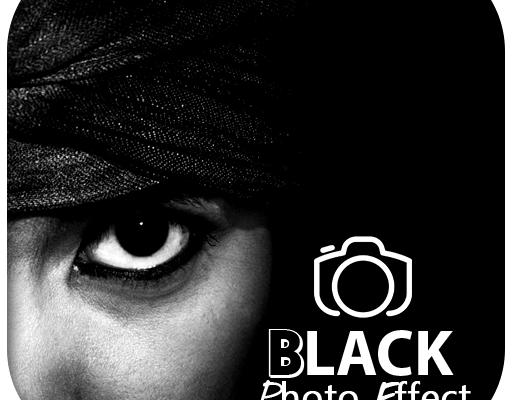The Art of Crafting Black Picture Edits
Delving into the realm of black picture editing, often referred to as black-and-white photo manipulation, unveils a refined artistic craft. This process revolves around the intricate enhancement of monochromatic images, producing visual marvels that stir emotions. While vibrant, colored photography has its allure, black-and-white imagery transcends time, adding a sophisticated and evocative tone by accentuating texture, form, and emotional depth.
The Significance Behind Black Picture Editing
Black picture editing isn’t simply about desaturating an image; it demands a keen comprehension of light, shadow, and contrast. This refined interplay transforms simple visuals into breathtaking art forms. By stripping away color, the photographer directs the viewer’s eye toward the finer details—composition, tactile textures, and the overall emotional ambiance—allowing for a more potent visual experience.
Selecting the Ideal Editing Software
Embarking on your journey into black picture editing requires the right tools at your disposal. Leading software such as Adobe Photoshop and Lightroom offer expansive features tailored for black-and-white transformations. These platforms grant photographers immense control over tonal shifts, allowing for meticulous adjustments that ensure each image is crafted with clarity and precision.
Foundational Techniques in Black Picture Editing
Modulating Contrast and Exposure
A foundational aspect of monochrome editing lies in the manipulation of contrast and exposure. Elevating the contrast intensifies the separation between the light and dark segments, enriching the image’s depth and dimensionality. Similarly, subtle tweaks in exposure dictate the overall luminance of the photograph, ensuring an optimal tonal spectrum that preserves both bright highlights and deep shadows.
Refining Shadows and Highlights
In monochrome photography, the delicate balance between shadows and highlights is pivotal in conveying mood and atmosphere. Tools such as the Shadows/Highlights adjustment offer the ability to rescue details from darkened regions while preventing overly bright sections from losing clarity. This careful balance yields images with greater emotional resonance.
Perfecting Black Levels
Achieving depth in black-and-white photography hinges on mastering black levels. Adjusting the black point slider allows for richer blacks and purer whites, enhancing contrast without losing essential details in highlights. This technique amplifies the image’s overall impact, drawing viewers into its visual narrative.
Advanced Black Picture Editing Techniques
Utilizing Gradient Maps
Gradient maps bring a level of sophistication to black picture editing by linking specific tonal ranges to varied grayscale hues. By applying this technique, one can introduce nuanced tonal shifts that dramatically enhance the image’s mood, offering a custom monochromatic effect that elevates the emotional engagement of the viewer.
Integrating Color Grading
Though devoid of traditional color, black-and-white images can still benefit from subtle color grading. Applying delicate tonal adjustments can infuse warmth or coolness, imbuing the image with a distinctive atmosphere that enhances the monochrome aesthetic.
Creating Dramatic Impact with Dodge and Burn
The Dodge and Burn technique, which focuses on selectively brightening or darkening areas, allows the artist to sculpt light within the image. By carefully enhancing certain shadows and highlights, photographers can guide the viewer’s eye, creating a powerful narrative that focuses attention on key elements within the frame.
Tips for Crafting Professional Black Picture Edits
- Experiment Boldly: Play with diverse editing methods to uncover your unique visual voice.
- Focus on Composition: Thoughtful composition and framing are key to creating images that captivate.
- Practice Continuously: Regular refinement and studying the work of established photographers helps enhance your skillset.
- Embrace Unconventionality: Pushing the boundaries of traditional editing can lead to extraordinary results.
- Stay Updated: Always keep abreast of new techniques and developments within the editing world.
Common Pitfalls to Avoid
- Over-editing: Pushing edits too far can result in unnatural images that lose their subtlety and impact.
- Neglecting Shadows and Highlights: Failing to preserve these crucial elements leads to flat and lifeless photos.
- Ignoring Composition: A disregard for compositional balance can undermine the visual potency of black-and-white imagery.
- Over-reliance on Filters: Relying too heavily on presets without understanding their effect can lead to uninspired results.
- Forgetting Feedback: Constructive critique from peers is essential for growth and improvement.
Presenting Your Black Picture Creations
Once you’ve honed your editing skills, it’s time to present your work to a wider audience. Sharing your monochrome creations via online portfolios, social platforms, or even curated exhibitions allows you to engage with a community of like-minded artists, gain valuable feedback, and inspire others with your unique creative vision.
Conclusion
Mastering black picture editing offers an opportunity to elevate ordinary photographs into enduring works of art. By understanding fundamental techniques and embracing more advanced tools, photographers can create compelling, emotion-laden images that resonate deeply with their audience. Every edit becomes a step in the journey toward crafting timeless visual stories.




